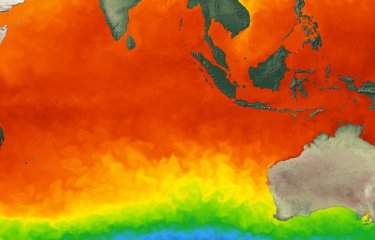In December 2015 a yellow fever epidemic broke out in Angola, subsequently giving rise to 7,300 suspected cases and nearly 400 deaths. A group of scientists from Oxford University and the Institut Pasteur conducted research into the geographical spread of this epidemic, with the aim of containing this outbreak and optimizing the use of the limited available vaccine stock.
According to the World Health Organization (WHO), as of November 16, 2016, the yellow fever outbreak “first detected in Angola in December 2015 had been responsible for 962 confirmed cases of yellow fever in Angola and the Democratic Republic of the Congo, and more than 7,300 suspected cases.” The last cases confirmed in Angola and the DR Congo were reported on June 23 and July 12 respectively.
During the epidemic, the scientists analyzed diverse datasets relating to this outbreak in order to understand its geographical spread and establish a basis for targeting areas in which the limited vaccine stocks should be used as a priority. Two teams took part in this study: one led by Moritz Kraemer at the Department of Zoology, University of Oxford (United Kingdom) ; the other was led by Simon Cauchemez, of the Mathematical Modeling of Infectious Diseases Unit at the Institut Pasteur in Paris.
“We concentrated on developing a rationale for the use of modeling tools to respond to emerging diseases,” explained Moritz Kraemer. “In particular, we analyzed datasets describing the epidemic of yellow fever, the disease vector suitability, human demographics and mobility, etc.”
A first phase of the study consisted of finding out if there was a pattern to the spread of the disease, in order to establish whether it was possible to predict the propagation of the yellow fever virus outbreak. The authors indeed found that there was a clear trajectory: propagation of the virus grew exponentially over time and it very quickly spread around Angola’s capital, Luanda. “Invasion was positively correlated with high population density,” explained Simon Cauchemez.
In the second phase, “we used this understanding of the yellow fever propagation process to infer the district-specific infection risk in the countries concerned,” he added. “We were then able to differentiate between districts with a high risk of infection and others with a lower risk.”
This Franco-British study aims to provide a relatively objective and reproducible framework in which to define future action priorities in areas most at risk. “This type of modeling tool is, of course, part of an overall epidemiological monitoring mechanism in the field,” Simon Cauchemez pointed out.
WHO has issued a reminder that the main weapons in the fight against yellow fever are “preventive vaccination, an increased global vaccine stockpile to respond to the threat and more effective preparation in the countries at greatest risk.” This observation highlights the importance of the study carried out by Moritz Kraemer and Simon Cauchemez to assess the areas that could be prioritized for vaccination.
Source
Spread of yellow fever virus outbreak in Angola and the Democratic Republic of the Congo 2015–16: a modelling study, Lancet Infect Dis, December 22, 2016.
Moritz U G Kraemer, DPhil a, Nuno R Faria, PhD a, Robert C Reiner Jr, PhD b, Nick Golding, DPhil c, d, Birgit Nikolay, PhD e, f, Stephanie Stasse, MD g, Michael A Johansson, PhD h, i, Henrik Salje, PhD e, f, k, Ousmane Faye, PhD l, G R William Wint, PhD m, Matthias Niedrig, PhD n, Freya M Shearer, BSc c, Sarah C Hill, BA a, Robin N Thompson, PhD a, Donal Bisanzio, PhD a, Prof Nuno Taveira, PhD o, p, Heinrich H Na x, DPhil q, Bary S R Pradelski, DPhil q, Elaine O Nsoesie, PhD b, Nicholas R Murphy, MPhil r, Isaac I Bogoch, MD s, Kamran Khan, MD t, Prof John S Brownstein, PhD j, Prof Andrew J Tatem, PhD u, v, Tulio de Oliveira, PhD w, Prof David L Smith, PhD a, b, x, Amadou A Sall, PhD l, Prof Oliver G Pybus, DPhil a, Prof Simon I Hay, DSc b, c, Simon Cauchemez, PhD e, f
a Department of Zoology, University of Oxford, Oxford, UK
b Institute for Health Metrics and Evaluation, University of Washington, Seattle, WA, USA
c Oxford Big Data Institute, Li Ka Shing Centre for Health Information and Discovery, Oxford, UK
d School of BioSciences, University of Melbourne, Parkville, VIC, Australia
e Mathematical Modelling of Infectious Diseases and Center of Bioinformatics, Biostatistics and Integrative Biology, Institut Pasteur, Paris, France
f Centre National de la Recherche Scientifique, URA 3012, Paris, France
g Health Programme, European Commission, International Cooperation and Development, Delegation en RDC, Kinshasa, Democratic Republic of the Congo
h Centers for Disease Control and Prevention, San Juan, PR, USA
i Center for Communicable Disease Dynamics, Harvard T H Chan School of Public Health, MA, USA
j Harvard University Medical School Boston, MA, USA
k Department of Epidemiology, Johns Hopkins Bloomberg School of Public Health, Baltimore, MD, USA
l Arbovirus and Viral Hemorrhagic Fever Unit, Institut Pasteur da Dakar, Dakar, Senegal
m Environmental Research Group Oxford, Department of Zoology, Oxford, UK
n Robert Koch Institut, Berlin, Germany
o Research Institute for Medicines (iMed.ULisboa), Faculty of Pharmacy, University of Lisbon, Portugal
p Centro de Investigacao Interdisciplinar Egas Moniz, Instituto Superior de Ciencias da Saude Egas Moniz, Caparica, Portugal
q Computational Social Science, ETH Zurich, Zurich, Switzerland
r School of Medicine, University of California San Francisco, San Francisco, CA, USA
s Divisions of General Internal Medicine and Infectious Diseases, Toronto General Hospital, University Health Network, Toronto, ON, Canada
t Li Ka Shing Knowledge Institute, St Michael's Hospital, Toronto, ON, Canada
u WorldPop, Department of Geography and Environment, University of Southampton, Southampton, UK
Flowminder Foundation, Stockholm, Sweden
w School of Laboratory Medicine and Medical Sciences, Nelson R Mandela School of Medicine, College of Health Sciences, University of KwaZulu-Natal, Durban, South Africa
x Sanaria Institute for Global Health and Tropical Medicine, Rockville, MD, USA
Mis à jour le 12/01/2017





